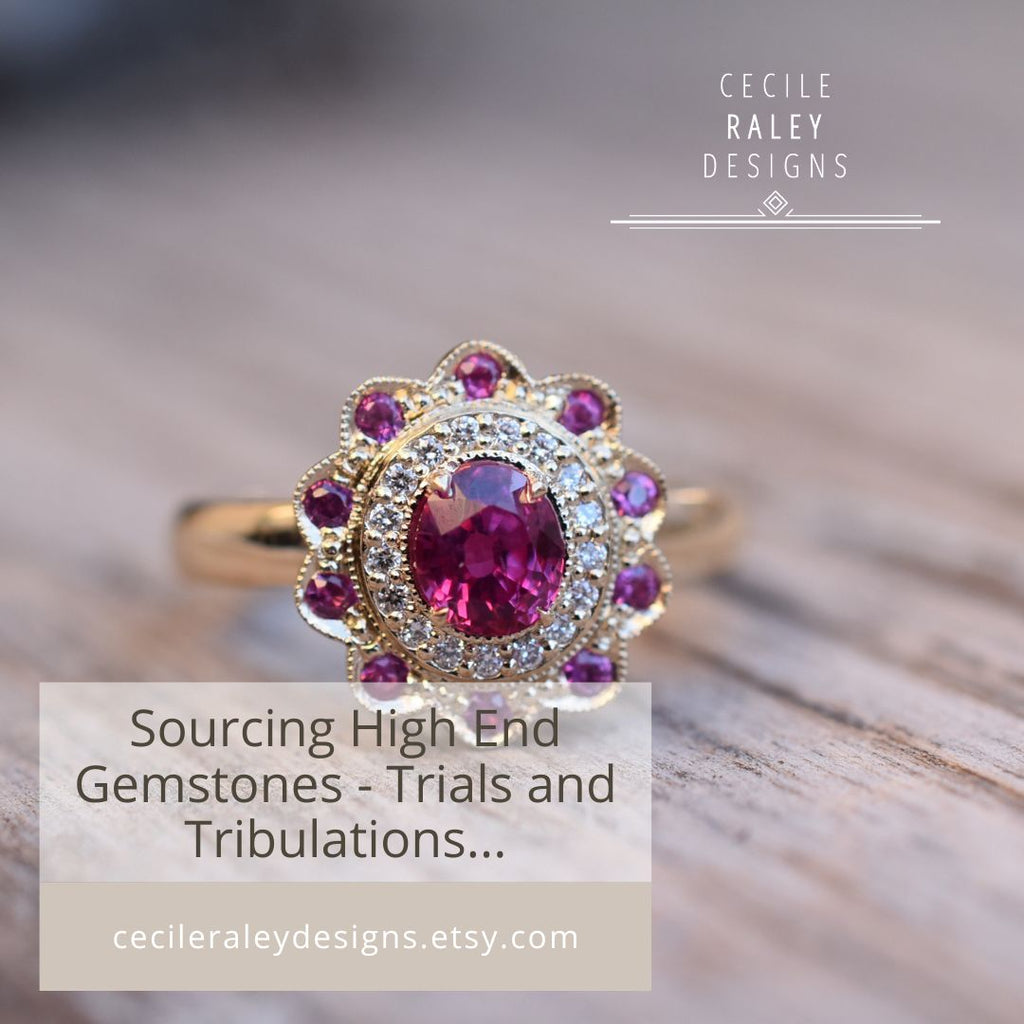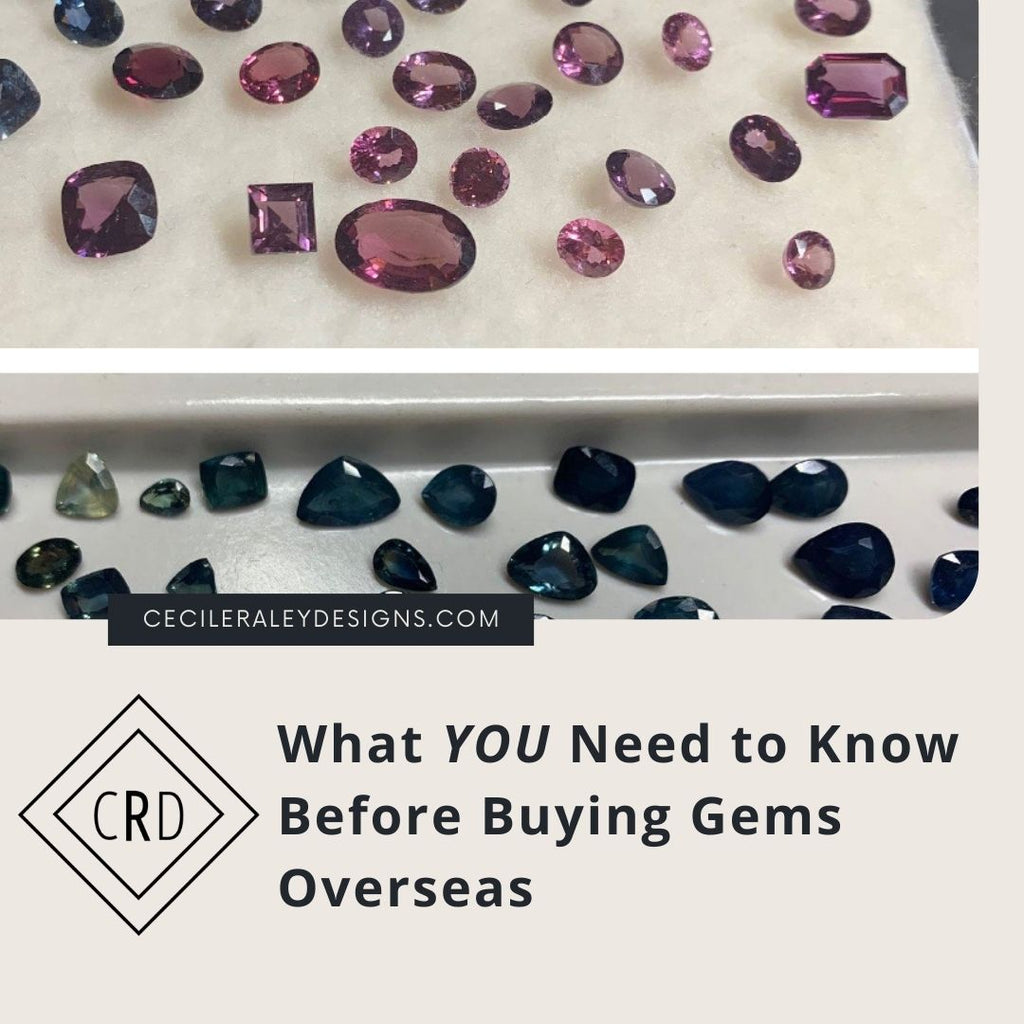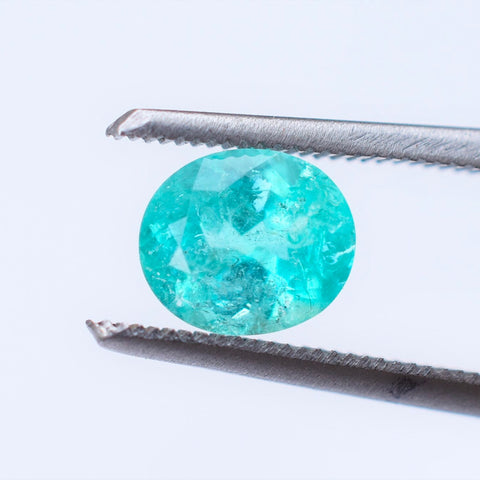The Art of Sourcing High End Stones: Tips and Pitfalls
Yes, from the retail perspective, 2022 was a relatively quiet year. People got the message about prices for everything increasing and prudently set their funds aside to prepare for things to come. In the high end gem market, however, life was busy. Some of my vendor friends were just about crying because they couldn’t find the goods. “I could have sold that 50 times over if only I’d had it,” one of my gem dealers vented about the new craze for radiant cut teal sapphires. Another person I know has a waiting list for 5+ carat royal blues. If you are looking for that special stone this year, how should you navigate this market without overpaying?

The first and most important advice to give here is something you don't want to hear: be discreet. Don’t spread it around that you are looking. I know, I know: you want to show your friends on Instagram, Reddit, or on the latest thread on your favorite online forum. You need all those opinions from others, after all, so that you don’t make any mistakes. You have to resist this!
But why? Getting other opinions keeps you safe, right? Wrong. There are several excellent reasons for staying under the radar. Let me discuss what I think are the two most important ones. (Yes, there are more. You’ll have to ask me, this blog is already too long.)
- You are driving up the price. Remember the good old rule about what causes inflation? Inflation is caused by increase in demand. And the rarer the stone, the faster a price can rise, even if there’s only a small handful of people looking. For some markets, i.e. unheated rubies above a certain size and in a certain color, there are way fewer stones available than the internet will have you believe. That’s the first point.
The second point is that the more followers you have, the more interest your post generates in a forum, therefore the bigger the reach. And among those reached, you will have guessed by now, are not only buyers but also sellers. Many of them at "ground level", in Ratnapura, say, where the very stones you are talking about may be coming out of the ground (i.e. royal blue sapphires). And the next time a US based vendor contacts "ground level" for similar material, the price is higher.
In our market this way of prices spiking, or rising permanently, is a well-known phenomenon, and in the last few years the speed at which information about gemstones circulates, has increased. We do what we can to avoid getting “important” gems to be seen in the retail market so that this doesn’t happen, but it happens anyway, and it happens all the time. And this is true, even if the call comes in by phone from a few smaller brokers to one of the main dealers in NYC. (By the way, that description makes me a small broker, and I am going out on a limb here but I would say that most of the big colored gems in NYC are in the hands of less than 10 people; the other couple hundred or less of them worth their name, own just a handful of expensive stones or lie somewhere in between). One of those upper 10 people said to me last week that in his view, if a broker waits longer than an hour to get stones on memo to show a client, he can lose the call. In our lingo, the “call” is the request for a particular type of stone, like a matched pair 5+ ct GIA No Oil Colombian Emerald certed green. And – I will add this now – in some cases, several calls coming in that afternoon for the same set of criteria can make the owner reconsider the price.
Also, in many regions of the world, gem dealers and brokers at ground level, and this stretches all the way to the N.Y. diamond district, operate in a large filial structure that gives them more financial backing and safety than someone outside that structure would normally realise. “Important” stones are routinely owned by more than one person, and you would be surprised how persistent a high price can be once the word is out that there’s a demand for that stone. Prices can get blown out of proportion, in fact, and then even vendors will not touch the goods, further decreasing availability at your end. As a gemstone seller, about 1/3 of the prompts I receive on Instagram are from other vendors overseas. I never respond because I need to go through my own trusted sources so that my purchases are protected. I would never buy from anyone on Instagram unless I knew them personally or through another person. If I were a retail buyer, I would at least test purchase for something inexpensive to see how the whole thing goes before I would even consider working with them on something big.
And what is the second most important reason for discretion?
- You are not getting good advice. Now you might ask how I could dare say such a thing, just point blank without referring to any advice in particular. Here’s why: photos don’t tell the whole story. Sometimes they don’t tell any story, or they tell a plain wrong story. And any advice you will be given is based on the photos you put out there. So even the best advice (and much of it isn’t the best advice) is only as good as the information it is based on: the photo. Try as we may, photos are very difficult to take accurately. Sapphires and rubies (and many other stones) both look more vibrant and photograph more vibrantly at the equator than they do in North America. Furthermore, phones and cameras differ (especially with respect to "the white balance"), the time of day when the photo was taken and often even because of the exact locations of several photos of the same stone even from the same person. And never mind all the stuff you can do with Photoshop! Even assuming the seller did their very best with the photo equipment they have, their camera may trick them and change things (smart phones are smarter than people!). Rubies and emeralds in particular are very hard to portray correctly. This is so much so that I often prefer to buy by color description and just use the photo to get an idea of saturation and clarity.


An in text footnote is apropos here. Actually, two.
Footnote A is that photos get constantly stolen online and then regurgitated by sellers (or pretend sellers) that do not own the stone but they try to use the photo to get clients for other gems. If you went by Instagram, you would think that there are 100x the amount of fine quality unheated Burma rubies on the market than there really are. And you would think that you should only buy a Russian Alexandrite that changes from red to green and that’s clean and sparkly. Right about now I want you to picture an emoji: it’s one of those faces that laughs so hard that tears are coming out of that round yellow face, because that one stone is a museum quality piece and its picture is shopped around everywhere.

Footnote B goes like this. Human visual systems vary a lot. Some of us don’t see as many differences in the green or red spectrum as others (same with other spectrums). There’s a lot of vision science to support this claim, so you don’t need to take this from me. If you want to have a fun evening testing your color vision with friends, go to one of the online tests, like the Ishihara or Cambridge Color test, or the Farnsworth 100 Hue Test. Prepare to be surprised, especially if you are male – you are statistically more likely to have a color deficiency.
Now. I hope I have convinced you what not to do. But what should you do instead? Imagine you have 10, 20 or 30K to spare, and you could really use some good advice because you don’t fully trust your seller.
My first piece of advice in that case is that you need to lose that seller. The gem business is in some ways a business like any other. Would you keep a carpenter or roofer you didn’t trust? No. You would go by recommendations, or a good bit of research, hopefully some opinion neutral informative ratings based on data, or you request an independent reference. You can do all those things with gem sellers too!
You are using a vendor not just because they own the gems and you don’t. You use them because you are deferring to their expertise. If you have seen 50 relevant comparison stones (or even 500), they have seen 50,000 or more. They have looked and looked and looked, and you simply can’t see what they see automatically until you have seen as many gems as they have. It’s a skill that can only be taught by doing it over and over, like egg sexing. Once someone shows you over and over and over that “this one’s male” and “that one’s female” you will eventually see automatically what they see, but there’s no criteria anyone can write down that can take the place of this process of simply seeing these things over and over again.
In the same way, a ruby dealer will see secondary hues that you simply do not see, and that a photo cannot capture. They will hone in on relevant inclusions in a way that you can only if you know what you are looking for. Consider a mammogram. Can you read one and know you have a lump that needs a biopsy? Not unless you are trained in mammography, right? It’s the same with cell biology and microscopes. And with so many other things, like gems.
So a very good gem seller (and one who can also communicate very well) is one who enables you to know things through his or her eyes, and whose descriptions are dead on. But it’s also one who protects you when you don't see what he or she sees. That person’s prices in the high end stones should be very dead on as well unless the stones are old and the vendor hasn’t had the time or energy or financial interest to change prices (yes, that happens).
One more point. Keep in mind that people who can afford to deal in expensive gemstones, who have the money to own them or the skill to find and present the right stones to the buyer, are not desperate for sales. Their reputation has more value to them than any one particular deal. Unless they make millions, they can’t very easily disappear after cheating someone unless they don’t live here in the first place, and one bad review because the client felt cheated on the value of their purchase can cost them the next 50 sales.
Also don’t forget that lab reports help you greatly when you need independent findings, especially with color ratings. So if you want a sapphire that’s royal blue but you’re not totally sure it’s royal blue when you are looking at it, then you get a GIA royal blue rated stone, and you have a royal blue in the most objective sense of "royal blue". Larger laboratories often use more than one person to do some of the color ratings (and for other things, too!). And stones above a certain value have to be run by the boss (This is from the horse’s mouth: Gubelin does that for Kashmir sapphires).
 An example of the ColorCodex introduced in 2019. Used by AGL to determine color. Click here for full article
An example of the ColorCodex introduced in 2019. Used by AGL to determine color. Click here for full article
Ok this was another long article but I’ll leave you with one last trick I learned from James Alger. It’s obvious really, once you hear it, but until you do hear it you won’t think of it: buy a small comparison stone and use it when you look at goods in person. If you want a 10mm Emerald that is GIA rated "green" then find yourself a 3mm stone plus some help in figuring out if it’s the right green. Or if you just want ‘this color’ – whatever "this color" is - it's just the color you like and and that's the one you want. Then you find this color you like in baby size and send it to the vendor. They will probably thank you because that’s the best way for them to figure out what you want.
Continue reading










